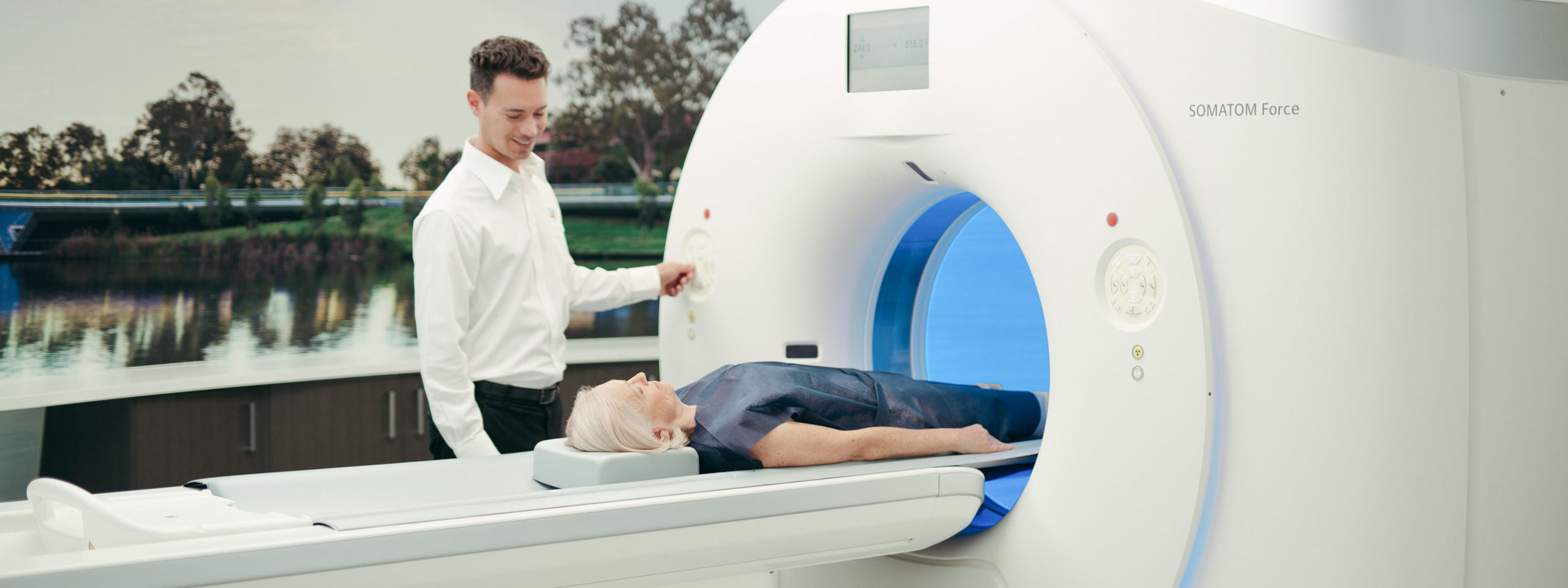This is an injection of local anaesthetic and/or steroid into a joint. The injection aims to provide relief from your symptoms and will help to confirm that your symptoms arise from the joint.
Procedure
You will lie on the CT or x-ray table, usually on your back, or you will be seated. The skin will be cleaned with antiseptic where the needle will be given. A fine needle is inserted into the joint that your doctor has asked us to inject, using an aseptic technique (strict infection control techniques to minimise any risks of infections). We use an x-ray (screening) or CT machine to guide the placement of the needle safely and accurately into the correct position. A small amount of x-ray contrast may be injected into the joint to confirm that the needle is in the correct location.
A long-lasting anaesthetic (e.g. Ropivacaine) and a long-acting steroid (e.g. Celestone) are most commonly injected together.
Before your Scan
You may eat and drink as normal before and after the procedure. If you are on any medication or have diabetes and are on insulin, take your usual medicines and diet.
Before the CT guided injection, you may be asked to change into an examination gown for your comfort, and to ensure clothing does not affect the images. You may also be asked to remove jewellery, eye-glasses and any metal objects that might interfere with the imaging. Please tell us if you are on medication to thin your blood (e.g. Warfarin, Aspirin or Clopidogrel), have an iodine allergy, or are pregnant or breastfeeding.
Risks / Side Effects
Joint injections are generally very safe.
Potential risks include infection within the soft tissues or joint.
Side effects from the procedure may include:
- Increase in symptoms (such as joint paint) for up to 48 hours, which will then settle.
- Increased blood sugar levels in diabetics.
- Local bruising.
- Insomnia, flushing and palpitations.
As part of the CT, you may need to have an injection of a IV contrast . This medication is administered intravenously (injection into vein) through a needle. When the injection goes in you may have a warm feeling in the face, neck or pelvis. This usually lasts for a brief period then disappears. These feelings are normal and not an allergic reaction.
Occasionally (<1%), mild allergic reactions such as a rash, hives or sneezing can occur. These usually develop at the time of scanning, do not require treatment and settle rapidly. Sometimes a mild reaction such as a skin rash may occur from 1 hour to 1 week after injection.
Less commonly (<1 in 100,000 patients), more severe reactions can occur including asthma or shock. Severe, life threatening reactions up to and including death have occurred but are extremely rare. In the event of a reaction, we have equipment and trained staff available to begin immediate treatment.
Other Information
You may experience some benefit from the local anaesthetic immediately following the injection, which will usually wear off after 2-3 hours. It can take several days for the steroid to begin to work and may take up to 2 weeks for it to have maximum effect.
The effect of the steroid can last for a week, several months or years. Sometimes there is no pain relief from the injection.
Avoid strenuous activity for at least 48 hours after the injection. Further rest of the area may be beneficial. Follow the advice of your referring doctor or physiotherapist.
If required, a simple analgesic such as paracetamol (Panadol) or anti-inflammatory should be sufficient. An ice-pack may also provide some relief.
It is important to note that although uncommon, infection is a potential and serious side effect – if you notice any fever or redness, swelling, or increased pain at the injection site after the first 2 days, notify your referring doctor or immediately call the clinic where the injection was performed.
Are you ready to make your CT (Computed Tomography) Scan appointment?
Our online booking platform allows you to quickly and easily make an appointment online.


